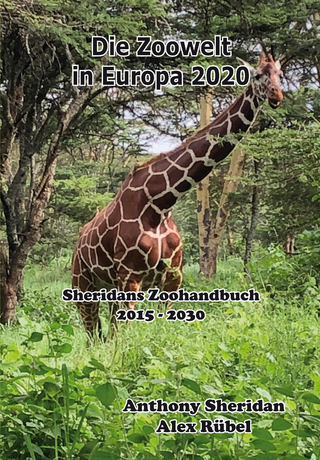
Brain Development in Drosophila melanogaster
Springer-Verlag New York Inc.
978-0-387-78260-7 (ISBN)
The central nervous system (CNS) represents the organ with the highest struc- tural and functional complexity. Accordingly, uncovering the mechanisms leading to cell diversity, patterning and connectivity in the CNS is one ofthe major chal- lenges in developmental biology. The developing CNS of the fruitfly Drosophila melanogaster is an ideal model system to study these processes. Several principle questions regarding neurogenesis (like stem cell formation, cell fate specification, axonal pathfinding) have been addressedinDrosophilaby focusing on the relatively simply structuredtruncal partsofthe nervous system. However, informationprocess- ing (e. g. , vision, olfaction), behavior, learning and memory require highly special- ized structures, which are located in the brain. Owing to much higher complexity and hidden segmental organisation, our understandingofbrain development is still quite rudimentary. Considerable advances have been made recently in bringing the resolution ofbrain structures to the level ofindividual cells and their lineages, which significantly facilitates investigations into the mechanisms controlling brain development.
This book provides an overview of some major facets of recent research on Drosophila brain development. The individual chapters were written by experts in each field. V. Hartenstein et al survey the generic cell types that make up the developing brain and describe themorphogenesisofneural lineages and theirrelation- ship to neuropil compartments in the larval brain. Recent findings on anteroposterior regionalization and on dorsoventral patterning in the embryonic brain are reviewed in the chapters by R. Lichtneckert and H. Reichert and by R. Urbach and G. Technau, respectively. Both processes show striking parallels betweenDrosophila and mouse.
CONTENTS
1. The Development of the Drosophila Larval Brain........... 1
Volker Hartenstein, Shana Spindler, Wayne Pereanu and Siaumin Fung
Abstract................................................................................................................................. 1
Synopsis of the Phases and Elements of Drosophila Brain Development........................ 1
Progenitors of the Drosophila Brain: Neuroblasts and Ganglion Mother Cells............. 3
The Generic Cell Types of the Drosophila Brain................................................................ 8
Neuroanatomy of the Developing Drosophila Brain: The Systems of Lineages,
Tracts and Compartments......................................................................................... 17
Outlook............................................................................................................................... 29
2. Anteroposterior Regionalization of the Brain:
Genetic and Comparative Aspects............................................. 32
Robert Lichtneckert and Heinrich Reichert
Abstract............................................................................................................................... 32
Introduction........................................................................................................................ 32
The Cephalic Gap Genes Otd/Otx and Ems/Emx Control Anterior
Brain Development..................................................................................................... 34
The Hox Genes Pattern the Posterior Brain..................................................................... 36
Evidence for a Tripartite Organization of the Brain....................................................... 37
3. Dorsoventral Paterning of the Brain:
A Comparative Approach.................................................................. 42
Rolf Urbach and Gerhard M. Technau
Abstract ............................................................................................................................... 42
Introduction........................................................................................................................ 42
DV Patterning of the Truncal Part of the CNS in Drosophila and vertebrates............ 45
DV patterning of the brain in Drosophila........................................................................ 48
A comparison with DV regionalization of the vertebrate telencephalon................... 52
Conclusions......................................................................................................................... 53
xii Contents
4. Disection of the Embryonic Brain Using
Photoactivated Gene Expresion.............................................. 57
Jonathan Minden
Abstract............................................................................................................................... 57
Introduction........................................................................................................................ 57
Procephalic Blastoderm Fate Map.................................................................................... 58
Brain-Forming Mitotic Domains Populate Distinct Brain Regions............................... 58
Conclusion.......................................................................................................................... 67
5. Design of the Larval Chemosensory System....................... 69
Reinhard F. Stocker
Abstract ............................................................................................................................... 69
Introduction........................................................................................................................ 69
Chemosensory Organs of the Larval Head...................................................................... 70
Olfactory System................................................................................................................. 71
Gustatory System................................................................................................................ 77
The Drosophila Larva as a Model for Smell and Taste.................................................... 78
6. Development of the Drosophila Olfactory System...... 82
Veronica Rodrigues and Thomas Hummel
Abstract............................................................................................................................... 82
Introduction........................................................................................................................ 82
Organization of the Drosophila Adult Olfactory System................................................. 84
Specification of the Olfactory Sense Organs.................................................................... 84
Olfactory Lineages Revisited............................................................................................. 87
Origin of Glial Cells............................................................................................................ 89
Development of ORN Connectivity................................................................................... 89
Olfactory Map Organization............................................................................................. 90
Cellular and Molecular Mechanisms of ORN Wiring Specificity.................................. 91
Specification of Projection Neurons.................................................................................. 92
Development of PN Dendrites............................................................................................ 95
Concluding Remarks.......................................................................................................... 96
7. The Olfactory Sensory Map in Drosophila.......................... 102
Philippe P. Laissue and Leslie B. Vosshall
Abstract............................................................................................................................. 102
Introduction...................................................................................................................... 102
Olfactory Organs and Olfactory Sensory Neurons of Drosophila................................ 103
Odorant Receptor Gene Expression................................................................................ 104
Ligand Tuning Profiles..................................................................................................... 105
A Receptor-Based Map of Glomerular Projections....................................................... 108
Sexual Dimorphism in the Drosophila Olfactory System...............................................111
Concluding Remarks........................................................................................................ 112
8. Optic Lobe Development.................................................................115
Karl-Friedrich Fischbach and Peter Robin Hiesinger
Abstract............................................................................................................................. 115
Introduction...................................................................................................................... 115
The Adult Visual System Is Organized into Parallel Visuotoptic
Functional Pathways................................................................................................. 116
Lamina Development........................................................................................................ 120
Medulla and Lobula Complex Development.................................................................. 126
Concluding Remarks........................................................................................................ 131
9. Clonal Unit Architecture of the Adult Fly Brain........ 137
Kei Ito and Takeshi Awasaki
Abstract............................................................................................................................. 137
Introduction...................................................................................................................... 137
Structure of the Adult Brain............................................................................................ 137
Techniques for Visualising Clonally Related Progeny................................................... 139
Clonal Unit Architecture in the Adult Brain.................................................................. 147
Formation of the Clonal Units During Development..................................................... 150
Functional Importance of the Clonal Units.................................................................... 154
Conclusion........................................................................................................................ 156
INDEX.............................................................................................................................TBA
| Reihe/Serie | Advances in Experimental Medicine and Biology ; 628 |
|---|---|
| Zusatzinfo | XIII, 160 p. |
| Verlagsort | New York, NY |
| Sprache | englisch |
| Maße | 178 x 254 mm |
| Themenwelt | Medizin / Pharmazie ► Studium |
| Naturwissenschaften ► Biologie ► Zoologie | |
| ISBN-10 | 0-387-78260-5 / 0387782605 |
| ISBN-13 | 978-0-387-78260-7 / 9780387782607 |
| Zustand | Neuware |
| Informationen gemäß Produktsicherheitsverordnung (GPSR) | |
| Haben Sie eine Frage zum Produkt? |
aus dem Bereich


